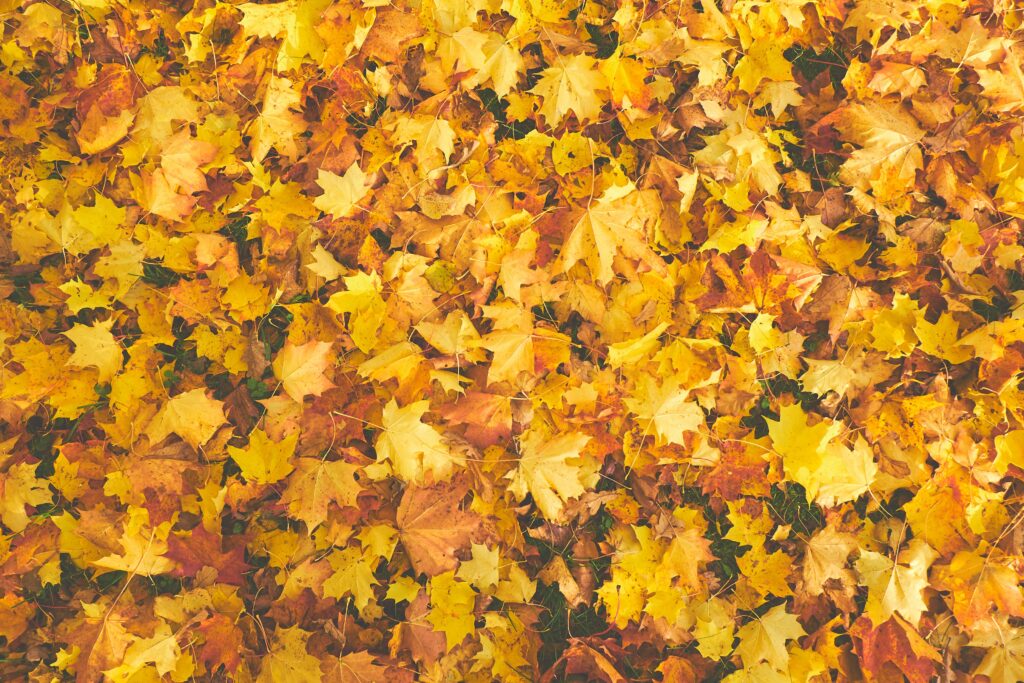
Fall is when leaves fall from trees and transform into a beautiful, natural addition to your yard. Harvesting leaves beautifies your property and reduces the amount of materials in landfills. It’s a great way to recycle or compost collected materials into the soil. However, knowing how to efficiently gather and dispose of leaves can be challenging. Leaf collection tools will help speed up your yard cleanup and recycling efforts by making the job easier and more efficient. Compostable leaf collection buckets can also gather leaves in the yard before transporting them to an outdoor composting or trash area. To avoid overburdening your yard’s infrastructure, consider these tips for collecting and disposing of your leaves. Consider hiring a service provider to collect and dispose of leaves for you.
1. Understand your disposal options
The leaf pile you remove from your yard will likely be transported to a landfill. If your municipality allows you to compost leaves, you can also compost them. However, most municipalities require all affected materials to be disposed of through the local waste authority, which may require you to remove and dispose of all leaves. Professionals that have handled this before may charge more than the cost of hiring someone else to do so. Ensure you use leaf collection tools that are the appropriate size for the leaves you’re removing. Leaf collection tools with large surfaces make leaf collection easier.
2. Select the best tools for the job
Leaf collection tools are commonly divided into two categories: handheld and pole-mounted. These leaf removal tools help with leaf removal as well as yard cleanup. Consider using both types of tools depending on the type of leaves you’ve collected and the condition of your yard. You can use a pole-mounted rake to clean debris, such as sticks, branches, and branches that may have fallen from trees. The handheld rake collects dried leaves and debris from gravel, sidewalks, concrete sidewalks, patios, driveways, or parking lots. For homeowners renting their property rather than owning it, you may have less control over leaf removal than if you owned the property. Know what type of leaf removal is permitted on the property before bringing in all your tools. Here are a couple of other leaf collection tools you should consider:
*Common leaf rake
A typical leaf rake collects debris, such as small twigs, branches, and leaves. If your yard trees are large, this type of rake may need to be more vital to collect all the leaves. It is also much more challenging to clean leaves from a lawn than sweep them from a driveway, sidewalk, or patio. These leaf removal tools are generally handheld and can be used for other yard cleanup projects, such as cutting grass.
*Lawn sweeper
A lawn sweeper is ideal for use in yards and driveways with large leaves. It features a cylinder with brushes on the top that sweep debris into a collection bag. This type of leaf collection tool is easier to use on tall grass or leaves than it would be on gravel or concrete. If you plan to do more cleanup work, you may need to purchase additional bags and swap them when they get full so you don’t overburden your yard infrastructure. Leaf removal tools may need extra help in places where leaves collect quickly. If your yard trees are in the way or if you have an area with too many leaves to clean, consider replacing your rake or lawn sweeper with a leaf vacuum.
*Leaf vacuum
These leaf removal tools are ideal for picking up loose leaves and debris on a lawn, driveway, or sidewalk. It features a rotating drum that pulls debris into its base through a tube. You can attach it to an extension hose to clean hard-to-reach areas such as patios or driveways. Vacuums are also helpful if you plan on composting your leaves to create soil for your flower beds and garden. However, many people choose not to compost their leaves, so most places need facilities for this type of material. These leaf removal tools are most effective when used with a leaf blower.
*Blower
A blower is most effective for clearing sidewalks, driveways, and other paved surfaces. Blowers also help with large amounts of leaves or debris rather than just picking up small twigs. They may be loud and require regular maintenance to ensure they work effectively. If you have a large amount of leaves throughout your yard, choose an energy-efficient model with a low-maintenance design to make the most of each charge of gas or diesel. Ask your local dealer about maintenance requirements for this type of leaf collection tool before you purchase it. It’s also important to consider a blower’s weight and width before purchasing it. If you are a tightwad and need more money for an accurate leaf collection tool, at least redo your yard with inexpensive gravel.
*Leaf rake
These leaf collection tools are similar to a standard leaf rake in shape. However, it is designed for collecting large amounts of leaves, not smaller particles. It can collect up to 400 pounds of leaves in one single load. For this reason, it should only be used when you have many leaves that need to be removed at once. Otherwise, the weight will unnecessarily strain your lawn’s infrastructure. These leaf collection tools are most effective when used with a blower on your lawn or driveway to remove the leaves from the lowered area.
*Riding mower
If you own a riding mower, you can use it as part of your yard cleanup. Riding mowers feature high rear decks that can collect trash and debris from gravel and other types of ground. However, they may leave ruts in your lawn if you need to collect large amounts of debris. Use them in conjunction with an extension or leaf rake for best results.
3. Keep unused space around your home clear of leaves
It may seem obvious, but you should keep the space that leads up to your home clear of leaves. You can also use this area to make a path with gravel or stones to give you easy access to the yard when it comes time for leaf removal. If leaves build up around the edges of your home, they can interfere with the function of gutters and downspouts. It can cause them to overflow and result in water damage to your home. Ensure you clean gutters regularly so they don’t become clogged by debris such as leaves or small animals. Use leaf collection tools to clean leaves from your roof and remove gutters and downspouts. You should also place a cover over any vents or stacks on your property. These covers will help protect the vents and stacks from debris such as leaves, snow, or rain.
4. Wait for warmer weather
During colder months, you can often wait until spring before collecting leaves using leaf collection tools. It will usually prevent damage to your lawn, but it may be the only way to ensure that they are dried enough to collect without causing unnecessary harm to the grass or hard surfaces in your yard. If leaves begin to fall in your yard during the warmer months, don’t hesitate to use them as compost for your flower beds and garden. Don’t let the fallen leaves go to waste.
5. Reduce the volume of leaves you collect
Collecting too many leaves at once can damage your lawn. Remember that you want to keep your lawn well-maintained using leaf removal tools and other methods, so avoid using them in combination unless necessary. If you need to collect large amounts of debris, such as pine needles or leaves, choose an area of the yard far away from critical structures, such as sheds or decks, where they can cause unnecessary damage if they fall from above. Leaf removal tools can significantly reduce the number of leaves you must remove from your yard each fall. Use them in conjunction with each other wisely to avoid a trail of fallen leaves throughout your yard.
6. Keep pets and children away from leaf collection tools
They are dangerous, even when you handle them correctly. Metals such as steel or aluminum are incredibly sharp and can cause an accidental puncture wound on unprotected hands while working with these leaf removal tools. Call a medical professional immediately if your child or dog accidentally gets sliced by one of these blades. It would help if you also ensured that these areas are off-limits to pets. Ensure you inform your family members about the dangers of these leaf removal tools so they can help you keep children and pets out of harm’s way.
7. Use caution when using leaf collection tools
When using your leaf collection tools, take care to do so safely. Use leaf removal tools with a belt to keep your items close at hand and in the correct order. It will help you avoid unnecessary strain on your body while collecting leaves. It would help if you also established a routine for yourself that is comfortable for you. Start with your most challenging areas, then move on to the easier ones as time passes. It will ensure you have enough time to finish the job before it gets too late.
8. Use a weeder
Avoid using a weeding tool, such as a hoe or a trowel, when using leaf removal tools. You can damage canes, roots, and worms when you do this, especially when they have been disturbed by an animal. These tools may also leave marks on the lawn that could cause problems for your other plants or soil if it needs to be adequately dried afterward. If you do use them, make sure that they are used safely. Hold the tool above the ground and away from the plants to avoid damaging you or your tools. Work around the entire area to dig up all your vegetation, ensuring you don’t damage anything.
9. Use the right bags
Bags for collecting leaves are no different than any other bag you might have around your home or yard. However, they must be designed to hold leaves and other types of debris. When choosing bags, ensure the material is flexible enough to give some under pressure. A good-quality bag is usually made from woven plastic or similar materials. This bag can stretch slightly but not too much and offer a little give if you need help collecting leaves. It ensures that leaf removal tools can remove as many leaves as possible without causing unnecessary damage to your garden.
10. Take your time when you’re collecting leaves
Leaf removal tools can be hazardous, so you should take care when using them to avoid severe injury or death. If you use these tools in combination with other tools, such as a lawn mower or a snow blower, you must know how to use them carefully and safely. The last thing you want is to injure yourself because of an overly aggressive mode of operation. These tools are designed to be used slowly and meticulously to ensure that you maximize the time it will take to collect your leaves.
11. Use leaf removal tools carefully
When you are using a leaf collection tool, always be sure that you are using it safely. Inspect the surface and ensure it is free from any debris or objects that might cause the tool to slip and cause damage or injury. If something is in the way, put on your protective gear before you move forward. Please keep your hands as still as possible, and avoid jerking them while collecting leaves with a raking tool. These events often lead to severe injuries that can devastate your yard for years if they happen frequently. Remember to take care when working with these tools because they can lead to serious injury if misused.
If you suffer from allergies, you must collect all your fallen leaves effectively to prevent yourself from suffering from congestion or irritation. Because of this, using leaf collection tools such as rakes or blowers in combination with other tools like a leaf vacuum can be incredibly effective. Use these leaf removal tools wisely, as they can cause injury if misused. Use the tips above to help you safely and efficiently collect all the leaves in your yard without harming yourself. You may use leaf removal tools for your yard to reduce your allergies and help your plants grow better. These are not tools for inexperienced or novice gardeners, and you will need plenty of knowledge about how best to use them so that you don’t hurt yourself or your plants. Be extra cautious when using leaf collection tools because they can be dangerous if misused.


